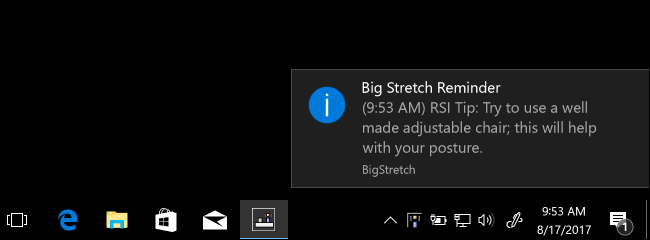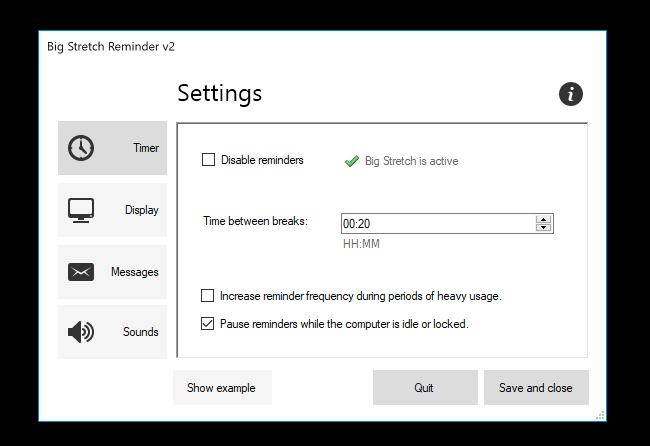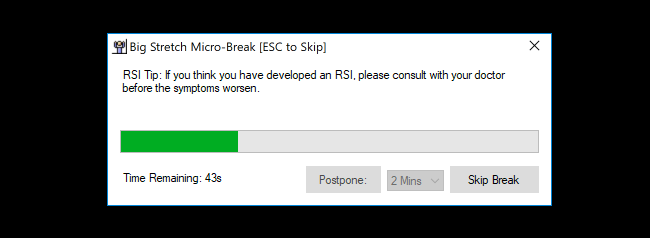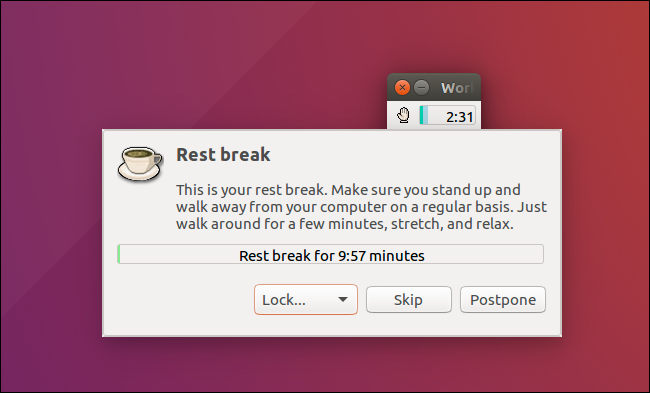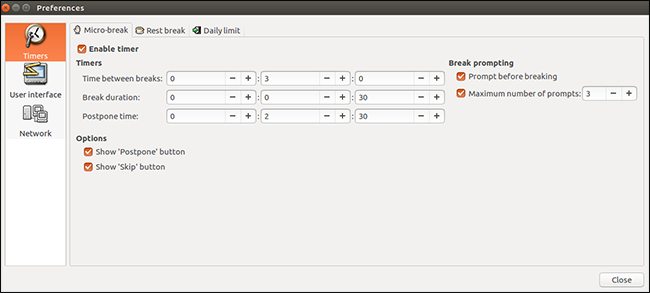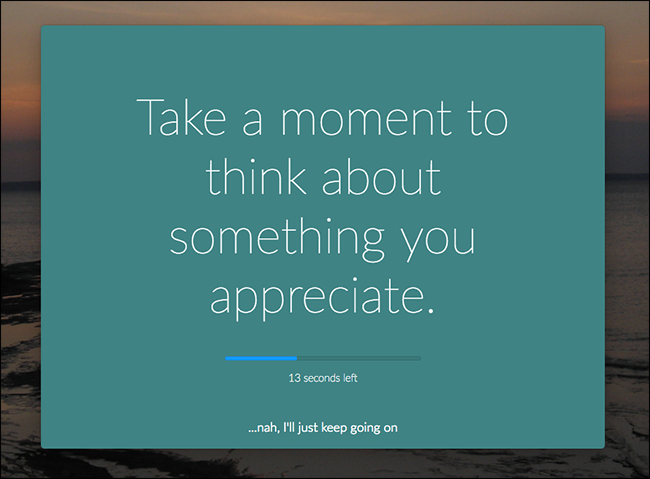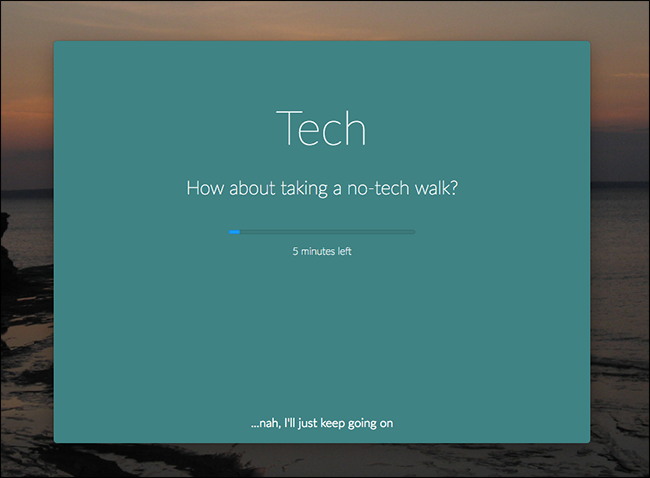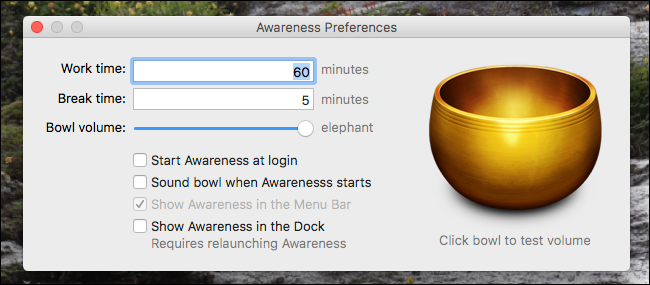Quick Links
Whether you work at your computer or just enjoy the occasional long gaming session, it's important to take breaks regularly. Getting up to take a walk, grab a coffee, or do some stretches helps reduce eye strain, prevent repetitive strain injury (RSI), and is otherwise just plain good for you. And one study from the University of Illinois at Urbana-Champaign shows that breaks might even enhance productivity by increasing focus.
So it's a good idea to take breaks regularly, but when you're in the thick of something it can be easy to forget. Happily, there are timers out there built to remind you. Some offer notifications, others just make a sound. Here are the four best break timers we found.
Big Stretch Reminder (Windows): A Customizable Tool With Notifications or Popups
Big Stretch Reminder is a simple tool, but it's nearly perfect. It's lightweight, free, and very customizable. By default, it offers you a simple notification every twenty minutes.
The idea is to get up and stretch whenever you see the notification. You can adjust the frequency of these breaks in the settings.
You can also change the unobtrusive notification into a micro-break window, which pops up over what you're doing and counts down for you.
This is great if you're the sort of person who tends to ignore simple notifications. By default, this application shows RSI prevention tips in its notifications and windows, but you can switch this out with either motivational quotes or a custom message if you want.
WorkRave (Windows, Linux): Three Different Kinds of Breaks
WorkRave, an open source tool, is a little more complicated. It offers three different kinds of breaks: micro-breaks, rest breaks, and a daily limit.
You will see a pop-up window whenever one of these is triggered, reminding or optionally forcing you to take a break.
Micro breaks are just that: a short reminder to look away from the screen and stretch for a bit. Rest breaks are longer---ten minutes by default. You can customize all of this behavior in the settings.
Installing on Windows is easy, and Linux users should check their package manager. On Ubuntu installation is simple:
sudo apt install workrave
will do the trick, but this of course varies depending on which distribution you're using.
Stretchly (Windows, macOS, Linux and FreeBSD): Cross-Platform Popups
Stretchly is unique in this list in that it runs on every desktop platform imaginable, thanks to Electron. Every ten minutes it encourages you to take a 20 second break.
Every 30 minutes it tells you to step away from your computer for a five minute break.
You can customize the invtervals between and the durations of breaks in the settings, where you can also change the color scheme and sounds.
It's simple to use.
Awareness (Windows, macOS): The Minimalist's Choice
Awareness is different than all of these tools, because it forgoes notifications entirely. Instead, this application makes a sound at set intervals---one hour by default. It's perfect if you're the sort of person who knows breaks are important but cannot stand interruptions.
Awareness shows how long you've been on the computer in the menu bar on macOS and in the tray on Windows.
Every hour you'll hear the sound of a Tibetan singing bowl. Take a five minute break away from your computer and the timer will reset; don't, and the timer will keep showing how long you've worked without a break. This encourages you to take a break without being intrusive.
There's not much in the way of settings: you can change the interval between and the length of breaks, and change the volume.
It's the minimalist's preferred tool for the job: effective without being obtrusive.
An Alternative: The Pomodoro Method
Some break enthusiasts will note I've completely overlooked The Pomodoro Technique, a productivity philosophy that encourages 25 minute work periods followed by five minute breaks. There is an entire genre of timers for this method out there, and I don't mean to diminish their effectiveness by not including them in this guide. Timers like Be Focused for Mac or Flowtime for Chrome work well for this, if you're curious. I just wanted to focus on timers that specifically encourage regular breaks, outside of any specific productivity framework.
Photo Credit: Kyle Meck


